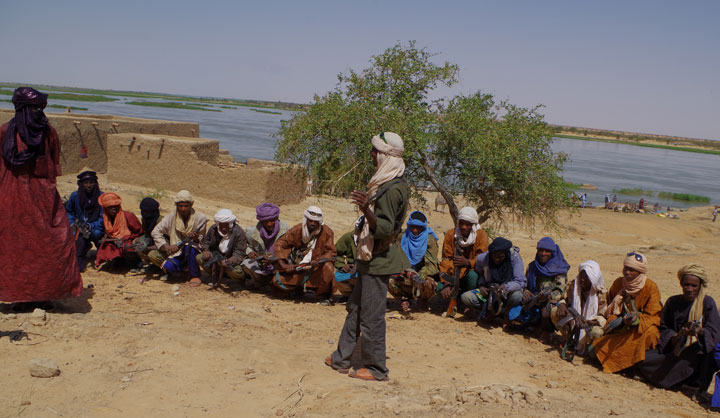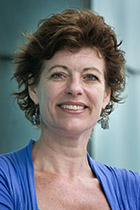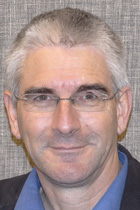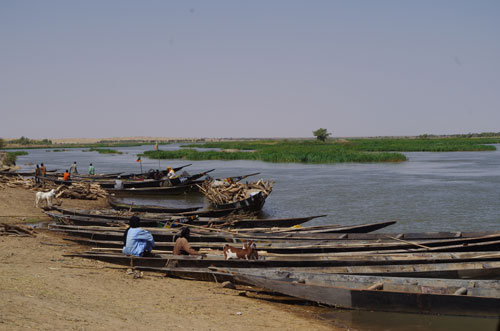The elusive Sahel Caliphate



Mirjam de Bruijn and Han van Dijk are lead researchers of the ASCL research project Nomads facing change: political mobilisation among Sahelian pastoralists. Mirjam de Bruijn is Professor of African Studies at Leiden University; Han van Dijk is a senior researcher at the ASCL and Professor of Law and Governance in Africa at Wageningen University & Research.
A few years ago, we could not have imagined writing this blog. However, since 2012, the Sahel has become a conflict zone. We reported on several occasions that things were going wrong, but there was hope that international interventions might halt the the destabilisation of the region.
It seemed illogical that the population of the Sahel, who had long lived with Islam and who were unenthusiastic about strict versions of the faith, would turn to Salafism and become fanatical Muslims, secluding their women and so on. But it happened and we do not hesitate to use the word Talibanization to describe the process underway in Northern and Central Mali, Northern Burkina Faso, Western Niger, and in the Lake Chad area in Northern Nigeria, Niger, Cameroon, and Chad. The presence and establishment of ISWAP (Islamic State’s West African Province) around Lake Chad has filtered through to the international press and is considered alarming. Similar tendencies in Mali, Niger, and Burkina Faso have yet to reach international attention.
 No greetings, no music
No greetings, no music
The reports of researchers from Mali, Burkina Faso, and Niger (see www.nomadesahel.org) tell of changes in societies in these areas. Where, previously, greetings were a social obligation, now people – and especially women – no longer greet each other publicly. Women, who are central to the pastoral economy, no longer sell their milk in the villages or on the market. Songs and music from the small guitar are no longer heard. Such activities are forbidden. Many (young) people adhere to these rules, perhaps out of fear, out of conviction, or for social convenience. We cannot be sure because talking about these things in the regions where these rules reign is not possible. Questioning the new norms is seen as suspect and putting one’s life at risk. Researchers believe that such alterations will change the culture of the people – their people – for good.
Killings
Since January 2019, the conflict in these and adjacent areas has entered a new phase. Cruel and very ugly violence is commonplace. The massacres of civilians in Yirgou (Burkina Faso) and in Ogossagou (Mali) and more recently in a mosque in northern Burkina Faso, have shocked the world. These killings, which were immediately referred to as possible genocidal, interethnic, farmer-herder conflicts, are the extreme outcome of the layered and complex conflict that has now surpassed all imagination of what a conflict can be. It is too simplistic to depict these killings as inter-community conflicts. Other forces are at play, such as interventions by national governments, the subcontracting of security to militias (supported by businessmen and national governments), and a militaristic approach to combatting opposition and terrorism that uses racist logic to target populations.
But the military are neither immune to attack. On several occasions, military camps have been plundered by ‘terrorist’ groups. Recently, on 1-2 October, the army camps in the border zone between central Mali and Burkina Faso (Boulikessi and Mondoro) were attacked, 40 soldiers were killed and 60 are still missing. Protests in Bamako and Sevaré followed against the incapability of the Malian State and international forces to stop the war. Even a camp of MINUSMA, the UN intervention force in Mali, was plundered by protesters. Consequently, we are seeing further destabilization in the region on all fronts.
Insecurity
 A fundamental driver behind the escalation of these conflicts and the possibility of a Sahel Caliphate is the absence of security. Since 2011, when the Tamacheq attempted for the fourth time since Mali’s independence to break away from the post-colonial national state, there has been perpetual insecurity in the region. When the Tamacheq fight was hijacked by Islamic groups in the Sahel, the collapse of the national state and its services was a fact and even France’s Operation Serval and its successor Barkhane in 2013 have done little to change the situation. International military operations like MINUSMA, regional military collaboration under the heading of G5-Sahel, and national armies have not managed to control the areas outside the main cities. Instead, insecurity has spread from northern Mali, to Central Mali, northern Burkina Faso, and parts of Niger.
A fundamental driver behind the escalation of these conflicts and the possibility of a Sahel Caliphate is the absence of security. Since 2011, when the Tamacheq attempted for the fourth time since Mali’s independence to break away from the post-colonial national state, there has been perpetual insecurity in the region. When the Tamacheq fight was hijacked by Islamic groups in the Sahel, the collapse of the national state and its services was a fact and even France’s Operation Serval and its successor Barkhane in 2013 have done little to change the situation. International military operations like MINUSMA, regional military collaboration under the heading of G5-Sahel, and national armies have not managed to control the areas outside the main cities. Instead, insecurity has spread from northern Mali, to Central Mali, northern Burkina Faso, and parts of Niger.
Uncontrollable militia
Military impotence has seen private security forces taking over the protection of the population against criminality and insecurity. The youth have united in militias for self-defence. These are often organized per village/small town and one of the uniting elements is ethnicity. The Malian government have also used Fulani self-defence groups – yimbe ladde (people of the bush) – as a tool in the war against the Tamacheq. It is no surprise that these groups turned into uncontrollable militia. It was clear from the start that these military actions would not restore security to the region, on the contrary, as similar experiences show in past conflicts. Over time, these self-defence groups were framed as part of Jihadi movements and, indeed, under pressure from national armies, other militias, and the French intervention force, they increasingly sought protection and financing from radical Muslim organizations in the North. At the same time, farmers’ groups have become united and organized their own ‘traditional’ Dozo (hunter) militias.These militias turned against neighbouring Fulani settlements in order to ‘protect’ farmer villages and are out of control of government authority.
In the midst of this turmoil appeared Hamma Kouffa, a Fulani singer who transformed from a critical observer into a preacher of the Jihadi message. In one of his last sermons, he praises the Fulani youth for their bravery in fighting injustice and their success in the war against the French and to establish Fulbe hegemony.

Injustice
Hamma Kouffa’s words resonate with the experiences of the population of Central Mali, Northern Burkina, and even beyond. The insecurity of the past five years originates in a long history of exploitation of the population by the State and local state representatives. It is also related to the changes in resource use and the ‘occupation’ of pasture areas that is linked to climate change and demographic growth. One could say that these injustices illustrate the hierarchies created in the post-colonial state and the failure of the democratization processes that started in the 1990s. Similarly, the narratives of the Dozo leaders reference the injustices and insecurity experienced by farmers since 2012. The region’s youth are easily mobilized in such circumstances.
International interventions
Despite the many efforts (huge if counted in financial terms) to reconcile the region, there is no prospect of peace. On the contrary, there is an increasing Talibanization of the region and it seems that the internationalization of the conflict might ultimately lead to a unification of the different regions where Muslim groups are in charge (financed by illegal trade and support from different powers) and the birth of a new Islamic Caliphate in the Sahel. The Jihad for Caliphate is an international undertaking, but it makes use of decades of poverty, exploitation, and discontent.
On the other side are the military operations of the international community – the UN missions and the G5 Sahel – inspired by the ideology of the war against terrorism and the fear that Muslim terrorism will spread. They only seem to create more discontent and mobilisation for extremist groups. These interventions cannot escape the logics of local conflicts, because of the use of proxies, i.e. local militias, and therefore ethnic and religious conflicts continue to brim over, and increase feelings of insecurity among the population, pushing youth to choose sides and fight for their ‘freedom’. In this world, the counter-discourse of Hamma Kouffa and Jihadi logic – after all, they do bring a form of stability back to the regions – is seductive. Thus, the stage is set for the, until now, elusive Caliphate to perhaps become a reality in the future.
Mirjam de Bruijn edited the volume Biographies of radicalization: hidden messages of social change which appeared in French under the title Biographies de la radicalisation. Des messages cachés du changement social.
The film Hope-less? Biographies of radicalization, made by Sjoerd Sijsma and produced by Voice4Thought, elaborates on the book.
Photo credits: All photos by Boukary Sangaré.
Top photo: Militia in Central Mali, 2015.
Upper left photo: woman selling milk in a village in Central Mali in 2015 - still possible then.
Photo right: Vehicle of the MINUSMA mission, Mali, 2015.
Lower left photo: Gourma, Central Mali.


Add new comment